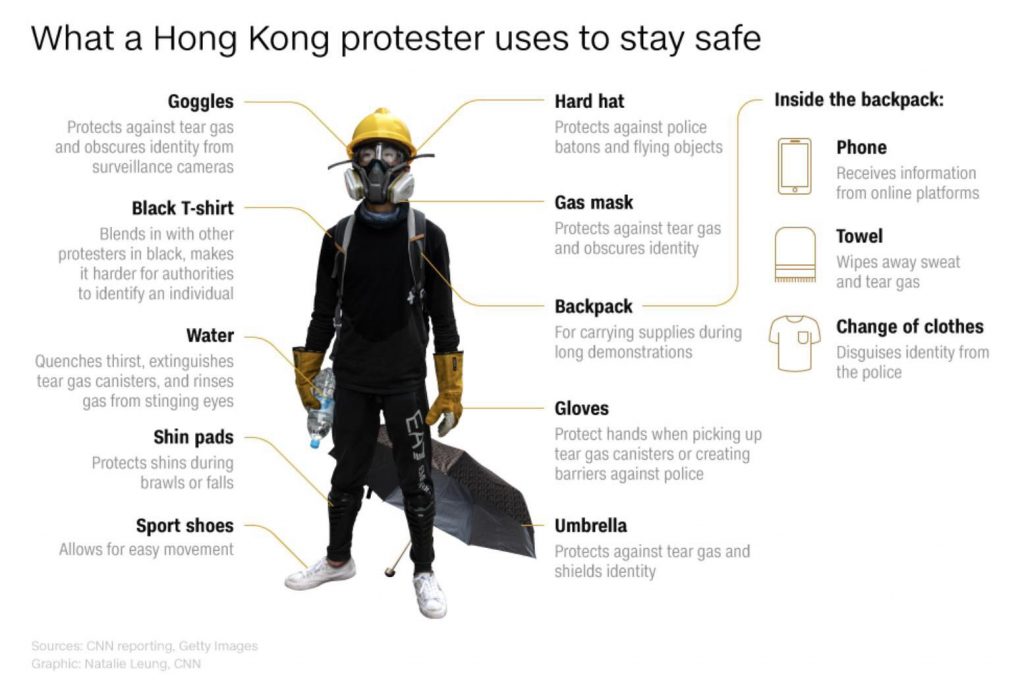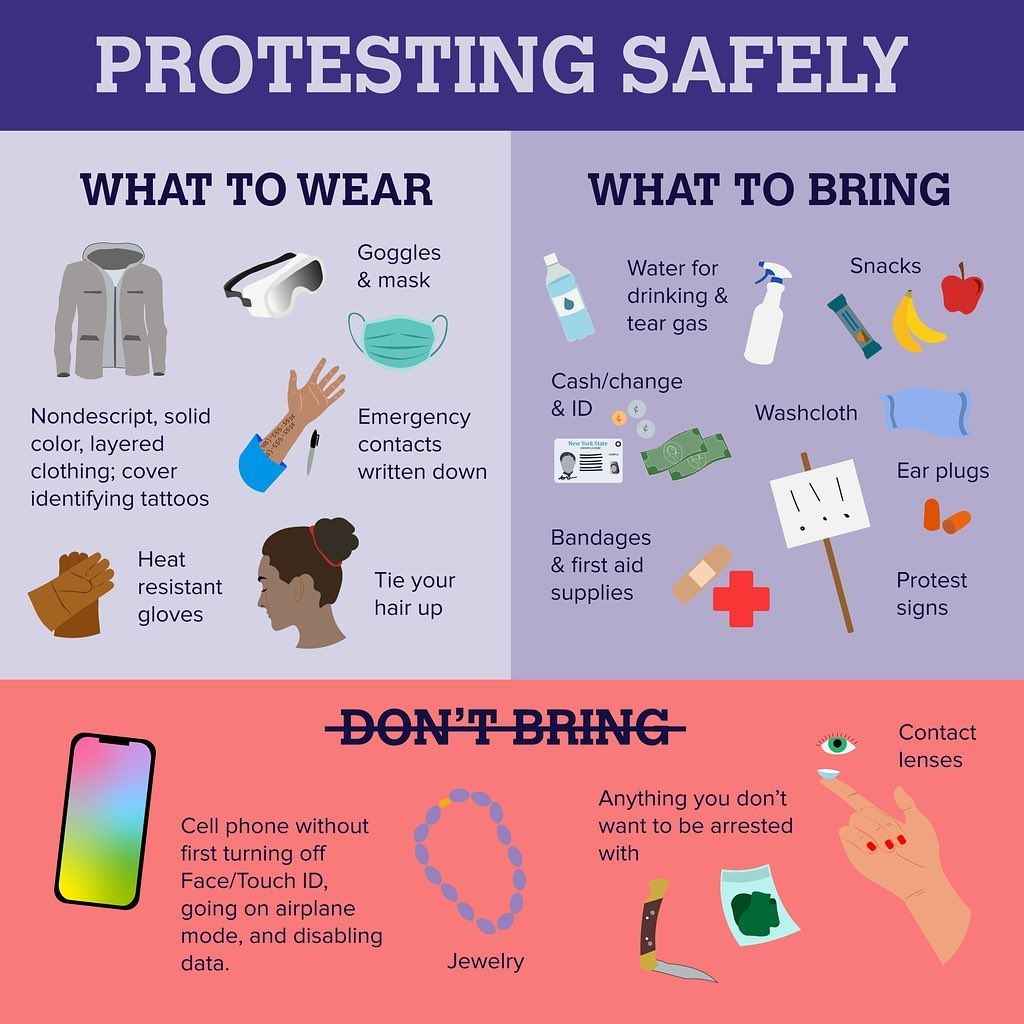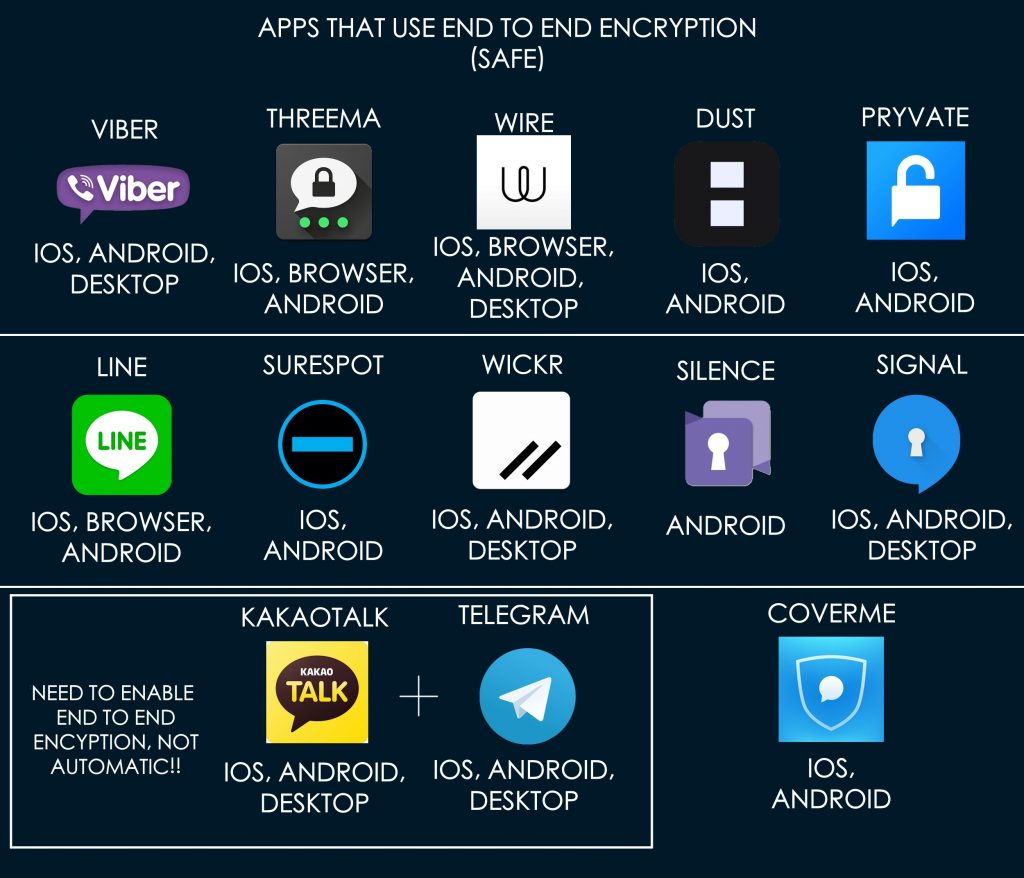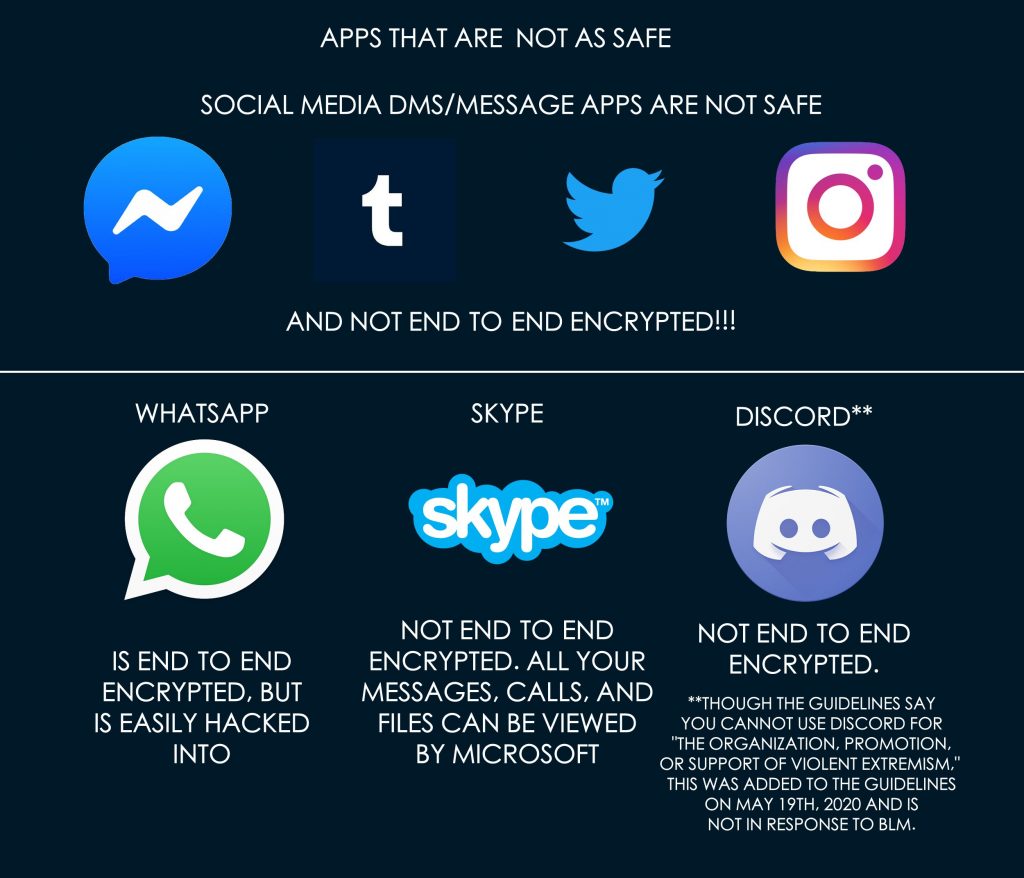Last Updated: 6/10/20 Change log
Going to a protest? Here is what you need to know! This is a living document (updated frequently).
- What to wear?
- Anything else I should do before I go protesting?
- How do I safely communicate in and outside of a protest?
- ‘Be Water’ Strategy
- Organize and Strategize
- Know your rights while protesting
- I got arrested! What do I do?
What to wear?

It might look seem a little extreme to go protesting in the same garb the Hong Kong protesters wear, but they know what they are doing. Their protest has lasted months and still going on strong because the people protesting are staying safe and avoiding arrest for the most part.
It is not 100% essential for you to have a gas mask since it is really hard to get one in the US. There are ways you can mitigate being exposed to tear gas, I will get to that later.
One thing to note is that you should wear a long sleeve or saran wrap your arms. If tear gas gets on your skin it might irritate it. The long sleeve or saran wrap should protect you against that. This is optional.

For the protesters:
— Deedee|| BLM (@Factivism2020) May 31, 2020
Do not wear oil based makeup,it makes the mace and tear gas effects worse.If you’re recording,unless it’s urgent,please use black boxes to censor people’s identities.Try your best at masking your identity!!Hide any identifiable tattoos or piercings. (Part 1)
Anything else I should do before I go protesting?
TURN OFF YOUR FACE ID! It is important that you turn off the face ID or any bio metric lock on your phone. You want to make sure that if your phone is taken that they are not able to get into your phone.
Put your phone on Airplane mode and disable data. It is important that you make it so that your phone isn’t relaying where you are at the protest. In case things go south, you want to make sure that you can get out of there without the police tracking you down. This is a precaution is very necessary if you are protesting in areas the police have been violent against protesters.
Be ready to take video. You want to make sure you have your camera app ready. I suggest you don’t use any social media (instagram, etc.) platforms to store your videos. If you really want to go live, go live on twitter. Twitter is the safest (still not very safe) largely used social media platform to post content to.
Review Anonymous’ survival guide for citizens in a revolution.
How do I safely communicate in and outside of a protest?
It is not safe and advisable to talk about going to or organize protests publicly online, here’s a quick info graphic @pomworm threw together that covers which communication apps are the safest to use for these kinds of things.


@pomworm is adding more information to that thread as they get it.
while it is not safe and advisable to talk about going to or organize protests publicly online, here's a quick infographic i threw together that covers which communication apps are the safest to use for these kinds of things! be safe and be vigilant! #BlackLivesMatter pic.twitter.com/USEHoDYnLG
— nari ✿ bIm (@iimacodidae) June 1, 2020
‘Be water’ strategy
The protesters in Hong Kong have adopted Bruce Lee’s philosophy to be “formless [and] shapeless, like water”, which they shorted to be the motto “Be water”. By moving in a mobile and agile fashion to different government offices during the 21 June protests, they aimed to bring additional pressure to bear on the government. Starting from August, protesters embraced the hit-and-run tactic when the police began to ban requests for demonstrations. As the police begin to advance, protesters will retreat, though they will often show up again later in the same district or reemerge in other places in a short period of time. The metaphor has been expanded to include “Be strong like ice” when they were confronting the police force, “gather like dew” when protesters organized “flash mob” protests that were often extemporaneous, and “scatter like mist” to ensure that protesters can escape before police clearance to avoid arrest.
I have seen lately that people are laying down on bridges. I think this symbolism is important in a protest, however, if we keep doing that, we will all get arrested in no time. We need to protest with the mindset that we will be there to protest again tomorrow and the next day.
Be water!
Organize and Strategize!
The more organize and strategic we are with our protesting, the farther we will get. Checkout some of these resources for how to protest strategically. Be sure to check out the important links page for more resources.
#BlackLivesMatter needs signal/coms operations. Use the real-time live maps drawn from scanner info & eyes on the ground to share info. Contribute to the map!https://t.co/fVdIhTqbfR
— Snufkin #MaskUp #RentStrike (@Anon_Snufkin) June 7, 2020
Police info from verified scoutshttps://t.co/BcmpNxGnXn
Open source map pic.twitter.com/E9G46yMVS5
Reply to this tweet with #StrategicProtest for it to trend. This account will be posting ways we can combat police brutality, both in protests and legal reforms. pic.twitter.com/9XxZsxbeQl
— Anonymous (@YourAnonStrateg) June 2, 2020
Know your rights while protesting!
‼️ KNOW YOUR RIGHTS WHILE PROTESTING: A THREAD ‼️
— ACLU (@ACLU) June 4, 2020
The right to protest is a fundamental human right guaranteed by the US Constitution and the First Amendment.
The police’s main job during a protest is to protect your right to protest and de-escalate any threat of violence.
If you get stopped by police, ask if you’re free to go. If they say yes, calmly walk away.
If you get arrested, DON’T say anything. Ask for a lawyer immediately. Don’t sign anything. Don’t agree to anything without a lawyer present.
Demand your right to a local phone call. If you call a lawyer, the police are not allowed to listen. If you call anyone else, they are likely to listen.
You never have to consent to a search of yourself or your belongings. Say that you don’t consent to the search. If you do explicitly consent, it can affect you later in court.
When you are lawfully present in any public space, you have the right to photograph anything in plain view, including federal buildings and the police.
Police may not confiscate or demand to view your photographs or video without a warrant, nor may they delete data under any circumstances. Visual records are fully protected, but some states have tried to regulate the audio portion of videos under wiretapping laws.
Individuals must receive clear and detailed notice of a dispersal order, including how much time they have to disperse, the consequences of failing to disperse, and what clear exit route they can follow, BEFORE they may be arrested or charged with any crime.
If you believe your rights have been violated, write down everything you remember, including the officers’ badge and patrol car numbers and the agency they work for. Get contact information for witnesses and take photographs of any injuries.
Learn more about your rights here.
I got arrested! What do I do?
List of Bail Funds for Protestors across the Country
Checkout more resources here.
Change Log:
6.10.20 Added Anonymous’ survival guide.
WE. DO. NOT. HAVE. TO. PEACEFULLY.
— Sima Lee (@simaleerbg) May 28, 2020
PROTEST. OUR. OWN. GENOCIDE.-
Recent Posts
- Firearms for General Struggle and First-Time purchase.
- THAT’S EXACTLY HOW YOU BECOME WHITE!
- Single Transferable Voting system
- Crime vs. harm and the violence of crime rates as our indicator of social wellbeing
- So why did the Portuguese decide to sail around Africa to find India? Why did Christopher Columbus sail to find India? A thread.
Categories
- Educate yourself (16)
- Los Angeles (2)
- Movement (3)
- Protesting (2)
- Uncategorized (1)
- Voting (6)
Recent Comments